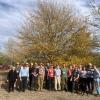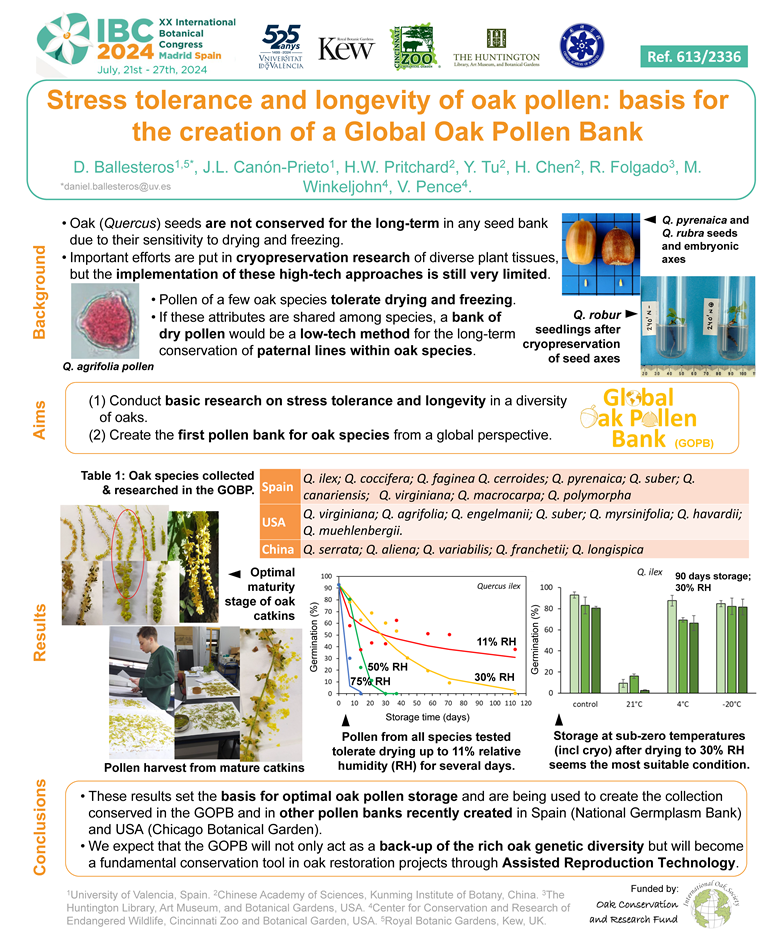Editor's Picks
Plant Focus
Stress tolerance and longevity of oak pollen: basis for the creation of a Global Oak Pollen Bank (GOPB)
Poster presented at the XX International Botanical Conference, Madrid, Spain, July 21–27, 2024.
Authors:
Daniel Ballesteros1, 5, Jose L. Canón-Prieto1, Hugh W. Pritchard2, Yu Tu2, Hongying Chen2, Raquel Folgado3, Max Winkeljohn4, Valerie Pence4.
Affiliations:
1. University of Valencia, Burjassot, Spain
2. Chinese Academy of Sciences, Kunming Institute of Botany, China
3. The Huntington Library, Art Museum, and Botanical Gardens, San Marino, California, USA
4. Center for Conservation and Research of Endangered Wildlife, Cincinnati Zoo and Botanical Garden, USA
5. Royal Botanic Gardens, Kew, Wakehurst Place, UK.
Abstract:
Oak (Quercus spp.) seeds are not conserved for the long-term in any conventional seed bank due to their recalcitrance: their sensitivity to drying and freezing. While important efforts are put in cryopreservation research of diverse plant tissues, the implementation of these high-tech approaches is still very limited. Hence, no back-up copy exists of the genetic diversity of most oak species in the world. One route to immediately strengthen oak conservation is to establish a pollen bank. Pollen of a few oak species tolerate drying and freezing. If these attributes are shared among all species reported, a bank of dry pollen would be a low-tech method for the long-term conservation of paternal lines within oak species. The “Global Oak Pollen Bank” (GOPB), funded by the International Oak Society, aims to: (1) conduct basic research on stress tolerance and longevity in a diversity of oaks, and (2) create the first pollen bank for oak species from a global perspective. We aim to collect, research and bank pollen from at least 50 oak species in a global context, including 10 of the most endangered taxa in some of the most important oak hotspots. So far, we have found that pollen from all species tested (4 from USA, 4 from China and 5 from Spain) tolerate drying up to 11% relative humidity (RH) and storage at sub-zero temperatures after drying to 11-30% RH. Longevity studies indicate that dry storage at 30% RH seems the most suitable condition. These results set the basis for optimal oak pollen storage and are being used to create the collection conserved in the GOPB. We expect that the GOPB will not only act as a back-up of the rich oak genetic diversity but will become a fundamental conservation tool in oak restoration projects through Assisted Reproduction Technology.
















